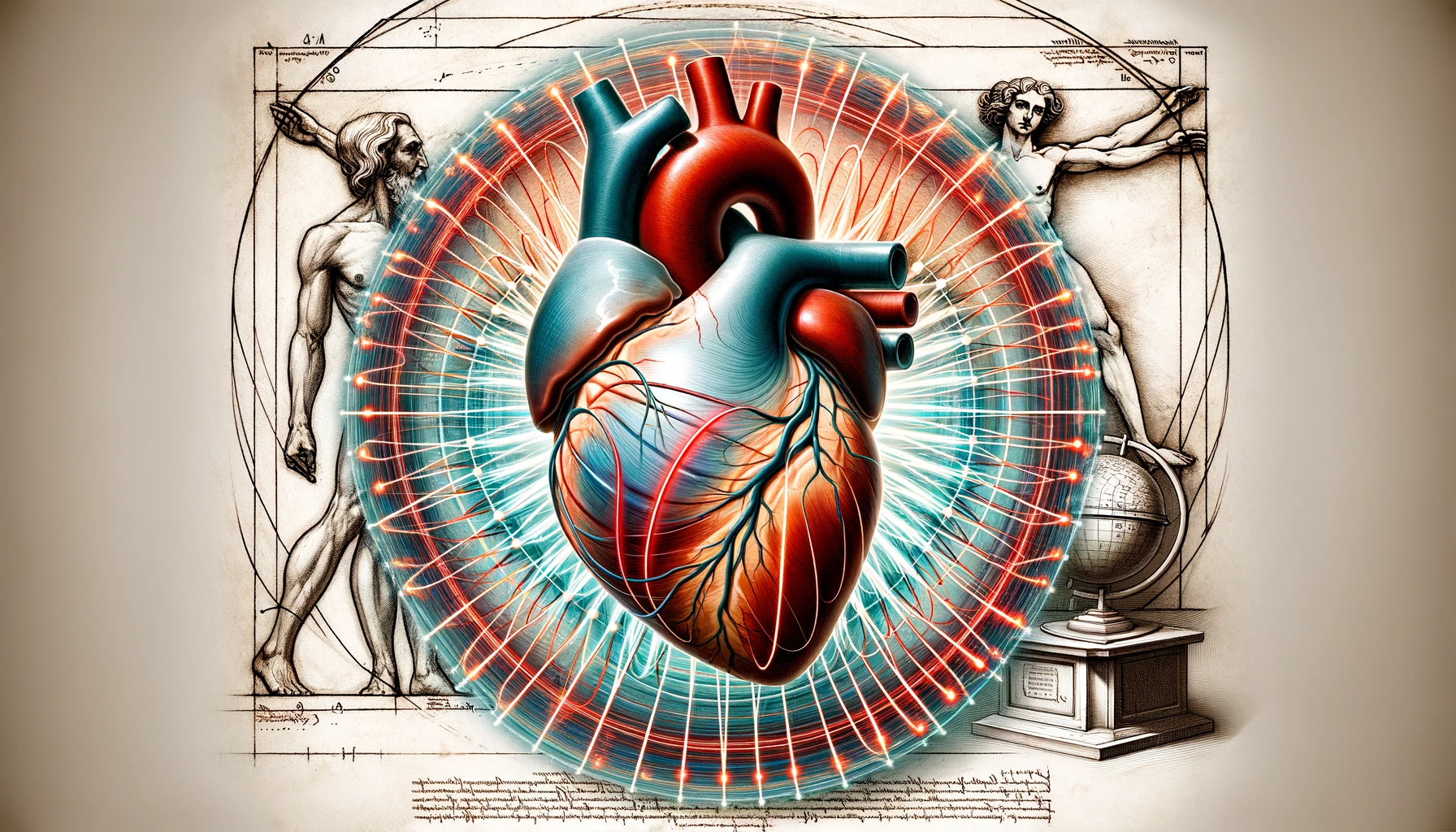The article titled “Cardiac Torsion and Electromagnetic Fields: The Cardiac Bioinformation Hypothesis” by Katharine O. Burleson and Gary E. Schwartz, published in the journal Medical Hypotheses in 2005, delves into the complex and less explored aspects of cardiac physiology. The authors propose a hypothesis that the heart is more than a simple piston pump, highlighting its unique properties:
- Cardiac Rotation and Torsion: During systole, the heart contracts and also rotates, creating torsion. This is attributed to the myocardium’s structure.
- Electromagnetic Field Generation: Each heartbeat produces a significant electromagnetic field, a result of the coordinated depolarization of myocytes that create a current flow. This magnetic field extends beyond the body and is distinct from the electrocardiogram signals.
- Bioinformation Generator: The hypothesis posits that the heart serves as a central bioinformation generator for the body’s normative functioning. This bioinformation is derived from various sources:
- Vortex blood flow in the left ventricle.
- The cardiac electromagnetic field.
- Heart sounds.
- Pulse pressure.
These components collectively contribute to the frequency and amplitude information crucial for the body’s physiology and biopsychosocial dynamics.
The article also discusses the therapeutic potential of interacting with the cardioelectromagnetic field both within and outside the body, which could lead to new treatments for cardiovascular disease. It emphasizes the importance of recognizing these cardiac properties for developing therapies that increase cardiac energy efficiency (coherence) and utilize bioinformation from the cardioelectromagnetic field.
The article encourages further research to validate and explore this hypothesis, particularly studies focusing on the heart’s structural properties that produce torsion and vortex blood flow, measurement techniques for the cardiac magnetic field, and clinical applications.

https://www.sciencedirect.com/science/article/abs/pii/S0167527399000662
The Cardiac Bioinformation Hypothesis, as presented in the article by Katharine O. Burleson and Gary E. Schwartz, explores the idea that the heart is more than a mechanical pump, asserting that it plays a critical role in generating and transmitting bioinformation throughout the body. This concept extends beyond the conventional understanding of the heart’s function in circulating blood and involves several key aspects:
- Multidimensional Role of the Heart: The hypothesis posits that the heart has a multidimensional role in the body’s physiology, contributing to the biopsychosocial dynamics of the human system.
- Generation of Electromagnetic Fields: A central aspect of this hypothesis is that the heart generates a significant electromagnetic field with each contraction. This field is produced due to the organized depolarization and repolarization of cardiac myocytes, creating electrical currents. Notably, this electromagnetic field is not confined to the body but extends outside it.
- Bioinformation from the Heart: According to the hypothesis, the heart functions as a generator of bioinformation crucial for the body’s normal functioning. This bioinformation arises from various sources, including the vortex blood flow in the left ventricle, the cardiac electromagnetic field, heart sounds, and pulse pressure. These elements provide frequency and amplitude information essential for the body.
- Impact on Cellular Functions: The hypothesis suggests that the heart’s electromagnetic field might interact with and influence cellular functions within the body. This could include the control of ion gates and cellular voltage potentials, which are key in cellular communication and function. However, the specific mechanisms by which the heart’s electromagnetic rhythm might influence these cellular processes are not detailed in the hypothesis and would require further research to elucidate.
- Therapeutic Implications: Recognizing the heart’s role in generating and transmitting this bioinformation could have significant implications for developing new therapies for cardiovascular diseases. The hypothesis encourages exploring how interventions targeting the cardiac electromagnetic field could improve cardiac coherence and energy efficiency, potentially leading to innovative treatment approaches.
In summary, the Cardiac Bioinformation Hypothesis introduces a novel perspective on the heart’s role in human physiology, emphasizing its function as a bioinformation generator through its electromagnetic field and other dynamics. This concept opens avenues for research and potential therapeutic innovations in cardiovascular medicine, although the exact mechanisms of how the heart’s electromagnetic waves might directly control cellular functions like ion gates and voltage potentials remain a subject for further scientific inquiry.
